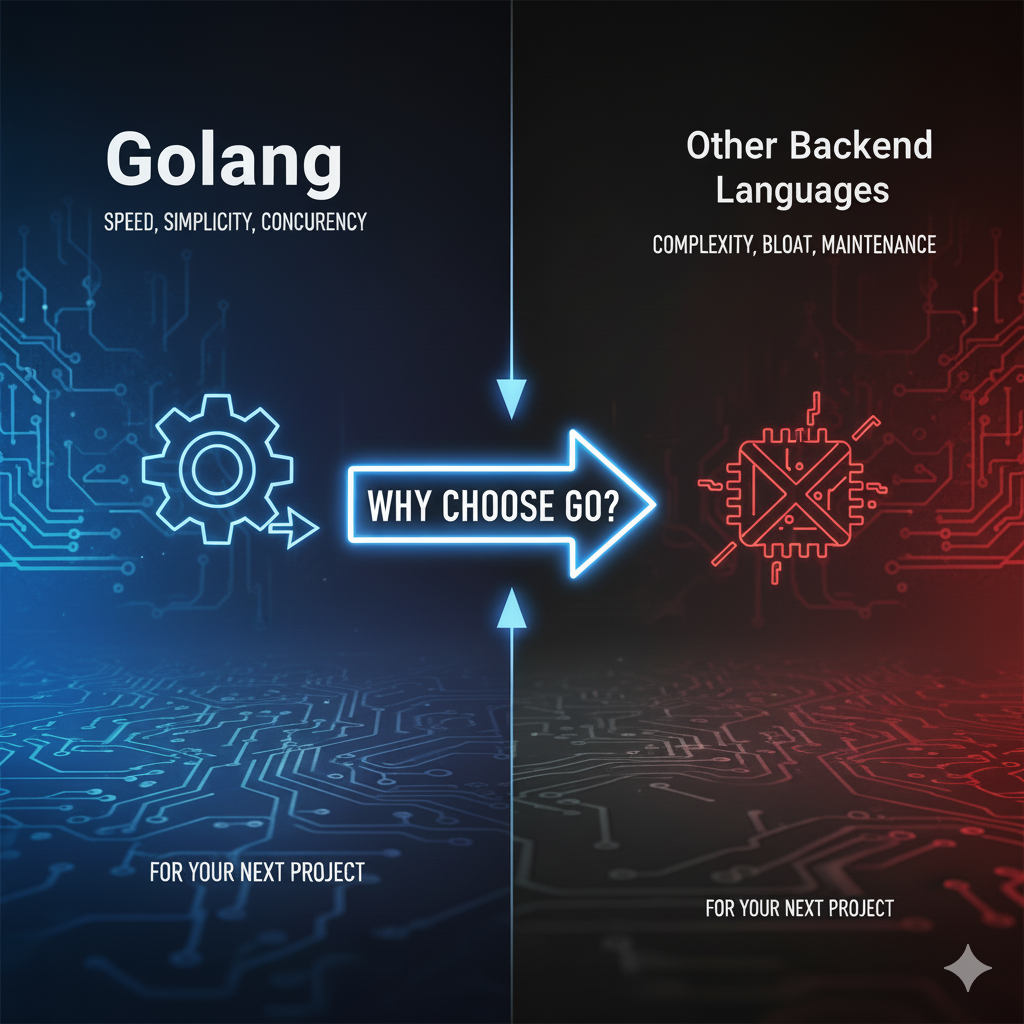Choosing the right backend language can make or break a software project. With so many options Python, Java, Node.js, and Rust among them developers often struggle to find the right balance between performance, scalability, and maintainability.
That’s where Golang (or Go) stands out. Created at Google, it was designed to simplify software development while delivering exceptional performance. Over the years, it has become a go-to language for building cloud-native, scalable, and high-performance systems.
Let’s look at how Golang compares to other popular backend languages and why it might be the best fit for your next project.
The Need for Simplicity and Speed
One of Golang’s biggest advantages is its efficiency . Unlike interpreted languages such as Python or JavaScript, Go compiles directly into machine code, which means it runs incredibly fast. Yet, it remains easy to learn its syntax is clean and readable, allowing developers to write powerful code quickly.
While Java and C++ offer comparable performance, they come with more complexity and longer development cycles. Go bridges that gap by offering speed without the usual development overhead, making it ideal for both startups and large-scale enterprise systems.
For businesses planning new software initiatives, it’s often smart to hire Golang developer teams early in the process. This ensures that architecture decisions and code foundations are optimized for Go’s speed and concurrency from the very beginning.
Built-In Concurrency: Go’s Secret Weapon
Concurrency — the ability to handle multiple tasks simultaneously is crucial for modern applications, especially those handling real-time data or large user volumes. Go’s goroutines and channels make this effortless.
Where other languages rely on heavy frameworks or external tools for parallel processing, Go’s concurrency is native and lightweight. This makes it perfect for use cases like chat systems, financial dashboards, IoT platforms, and high-traffic APIs.
A Natural Fit for Cloud and Microservices
The world of DevOps and cloud computing has embraced Golang for good reason. Many of today’s most important tools including Docker, Kubernetes, and Terraform are written in Go.
This deep integration into the cloud ecosystem makes Go ideal for microservice architectures and distributed systems. It enables teams to deploy, scale, and manage applications easily while maintaining high performance.
If your organization is looking to modernize its infrastructure, partnering with a professional Golang development service can help ensure your backend systems are optimized for performance, scalability, and future growth.
Easy Maintenance and Team Collaboration
Go’s simplicity extends beyond writing code. It enforces formatting rules that keep code consistent across large teams. This reduces confusion, improves readability, and minimizes bugs — all of which contribute to easier long-term maintenance.
In contrast, languages like JavaScript or PHP allow multiple ways to achieve the same result, leading to inconsistent codebases over time. Go’s straightforward structure and built-in formatting tools prevent that problem entirely.
Golang vs Other Backend Languages
Here’s how Go stacks up against some of the most commonly used backend languages today:
- Go vs Python – Go is significantly faster and better at handling concurrent processes.
- Go vs Java – Go offers simpler syntax, shorter build times, and faster deployment.
- Go vs Node.js – Go outperforms Node in CPU-heavy workloads and concurrency management.
- Go vs Rust – Rust offers tighter control but comes with complexity; Go delivers speed with developer friendliness.
Ultimately, Go hits the sweet spot between simplicity, scalability, and raw performance all without the steep learning curve.
When You Should Choose Go
Go is the right fit when your project demands:
- High performance and low latency
- Scalable architecture for growing traffic
- Real-time data handling
- Cloud-native deployment
- Easy maintenance and quick development cycles
From fintech platforms and IoT systems to social media apps and enterprise APIs, Go has proven its reliability across diverse use cases.
Conclusion
In today’s fast-moving tech landscape, choosing a backend language that can grow with your business is essential. Golang offers the ideal blend of performance, simplicity, and scalability qualities that make it a long-term investment rather than just a trend.
Whether you’re building your first prototype or scaling a global platform, Go provides the foundation you need for speed, security, and maintainability.





